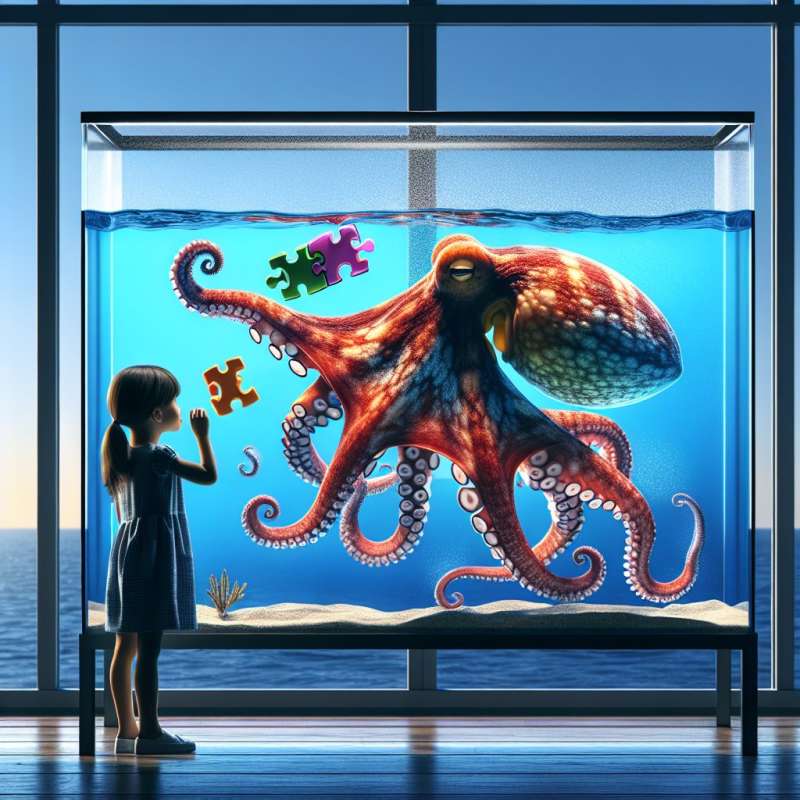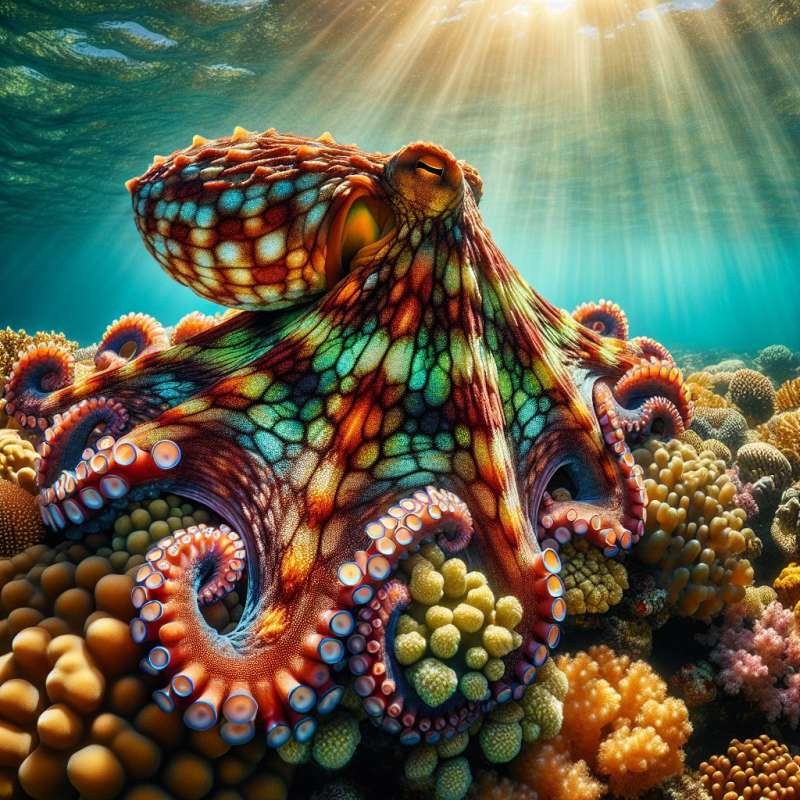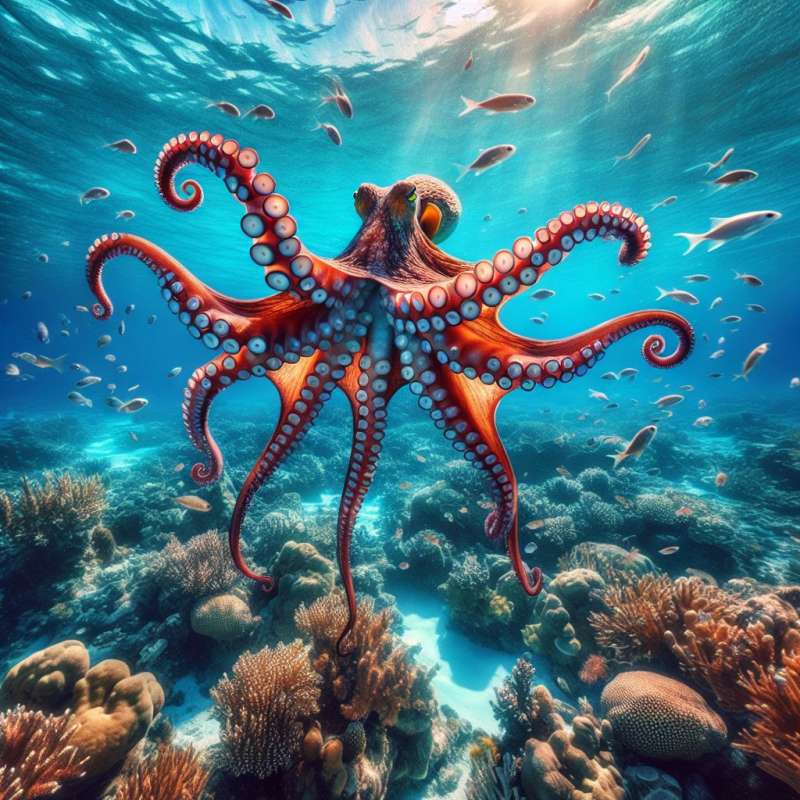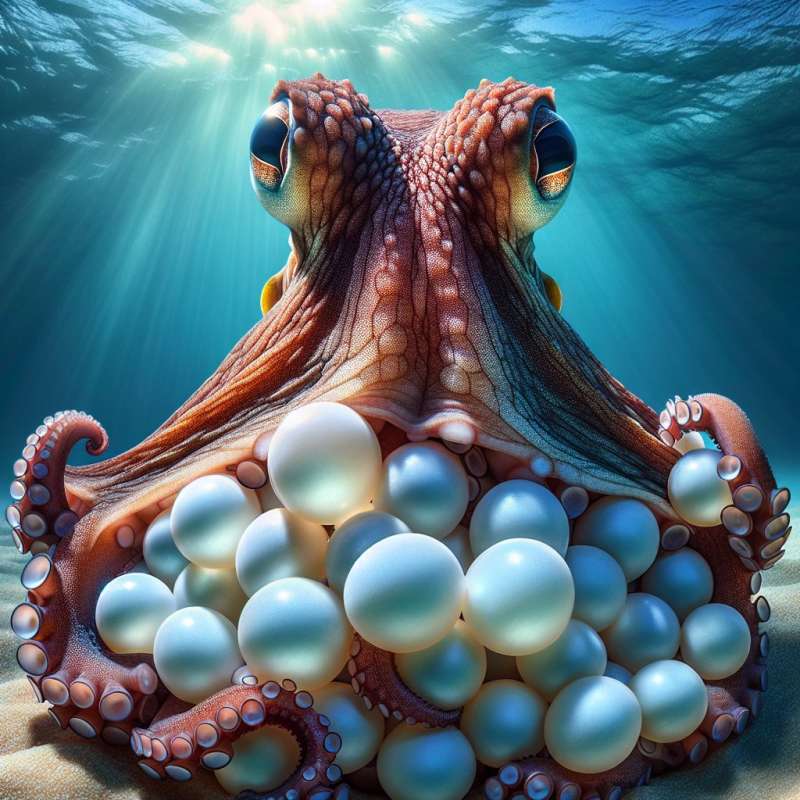
Octopus: Intelligent Molluscs
Octopuses are highly intelligent invertebrates with complex behaviors. They can solve puzzles, navigate mazes, and have short and long-term memory capabilities, rivaling some vertebrates.
Cephalopod Camouflage Masters
Octopuses can change skin color and texture in milliseconds, matching their surroundings. This ability is not just for camouflage but also used for communication and predation.
Unique Anatomy Wonders
An octopus has three hearts and blue blood. Two hearts pump blood to the gills, while the third circulates it to the rest of the body. Their blood uses hemocyanin for oxygen transport.
Regeneration and Defense
When threatened, an octopus can perform autotomy, detaching a limb as a distraction. The lost limb can regenerate completely, a remarkable feat among animals.
Venom and Beak
All octopuses have venom, but only a few species like the blue-ringed octopus are dangerous to humans. They also have a beak, the hardest part of their body, used to crack shells.
Octopus Reproduction
After mating, the female octopus lays up to 400,000 eggs. She guards and cares for them until they hatch, after which she dies, making their reproductive cycle both amazing and tragic.
Lifespan and Growth
Most octopuses have a short lifespan, often less than two years. They grow rapidly from a larval stage, and their growth is determinant, meaning they stop growing once they reach a certain size.Self-Destructive Intelligence
Octopuses can perform autotomy under duress, detaching their own limbs for survival, which regrow fully later.
What do octopuses use hemocyanin for?
Pumping blood to gills
Oxygen transport in blood
Changing skin color rapidly
Company